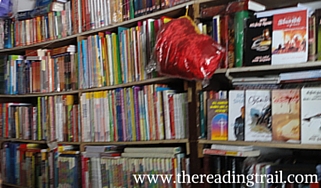So let’s travel to the lovely land of Norway! I’ve just finished reading a collection of Henrik Ibsen’s four great plays – A Doll’s House, The Wild Duck, Hedda Gabler and The Master Builder. All four plays revolve around the Norwegian middle class family struggles and the role of women in such circumstances. While the plays could be considered a tad morbid, they make for a fascinating read – I highly recommend the book. 🙂
So what are the plays about? In ‘A Doll’s House’, the protagonist takes on a loan in order to save her husband’s life, without him knowing of the true source of the money. What unfolds when he finds out, leads to the unravelling of a certain strength in the lady’s character, which was perhaps so unexpected, that she ends up surprising herself too.
In ‘The Wild Duck’, the protagonists are ostensibly two men, Gregers Werle and Ekdal, but the story actually goes on to bring out the sacrifices made by Gina, Ekdal’s wife, resulting in much of the comfort and benefit in the life the two lead.
‘Hedda Gabler’ is a study on the mind games the protagonist can play, manipulating those around her with cold precision. Her motives for doing so seem sadistic, and yet the reader does feel a sense of pity for her – for someone who seemingly has everything, and yet has nothing.
And finally, ‘The Master Builder’ portrays the heights and depths to which a man can rise and fall – all shown through the actions of the male lead, when goaded by his wife and conversely, by his muse.
All four plays are masterfully written, with events unfolding at a quick pace. While the debate rages on about whether Ibsen was a feminist or not, I’m going to put in my two cents and say that he was. In all four plays, the women take decisions that affect the families in either extremely beneficial or catastrophic ways. The women also display a strength of character that was unheard of in the times when the plays were written. But perhaps Ibsen was clairvoyant enough to know the potential of women in a way that they themselves didn’t. And while we have made tremendous progress since those times, I wonder if we need more Ibsens today who can nudge us towards maximising our own potential.


 The cover says it all, a woman with her back turned on us. “One who goes away, leaving everything empty, leaves the imprint of his living heart even on lifeless objects”, says Tagore in ‘The Lost Jewels’, a story in his anthology ‘Broken ties and Other Stories”. The scene is of a husband waiting for his departed wife to appear in a room filled with her things. Tagore evokes a palpable pain in his writing of the impact the departed leave on the living. The anthology, published by Projapoti Books, has eight stories, each talking about the impact a woman’s absence has on the men in her life.
The cover says it all, a woman with her back turned on us. “One who goes away, leaving everything empty, leaves the imprint of his living heart even on lifeless objects”, says Tagore in ‘The Lost Jewels’, a story in his anthology ‘Broken ties and Other Stories”. The scene is of a husband waiting for his departed wife to appear in a room filled with her things. Tagore evokes a palpable pain in his writing of the impact the departed leave on the living. The anthology, published by Projapoti Books, has eight stories, each talking about the impact a woman’s absence has on the men in her life.


 Kiki’s has all kinds of books, and the couple have also built relationships with several schools for their book supplies. Due to their past association with KIS, which follows international education standards and therefore has most students from other countries, Kiki’s is a frequent recipient of books from patrons coming from as far off as Israel and Spain. It also sells different kinds of cheese – provided by a Dutch friend. The store’s USP is the fact that they never turn away a customer, even if they don’t have the book in stock – they ensure that they get the book eventually and send it to the customer.
Kiki’s has all kinds of books, and the couple have also built relationships with several schools for their book supplies. Due to their past association with KIS, which follows international education standards and therefore has most students from other countries, Kiki’s is a frequent recipient of books from patrons coming from as far off as Israel and Spain. It also sells different kinds of cheese – provided by a Dutch friend. The store’s USP is the fact that they never turn away a customer, even if they don’t have the book in stock – they ensure that they get the book eventually and send it to the customer.